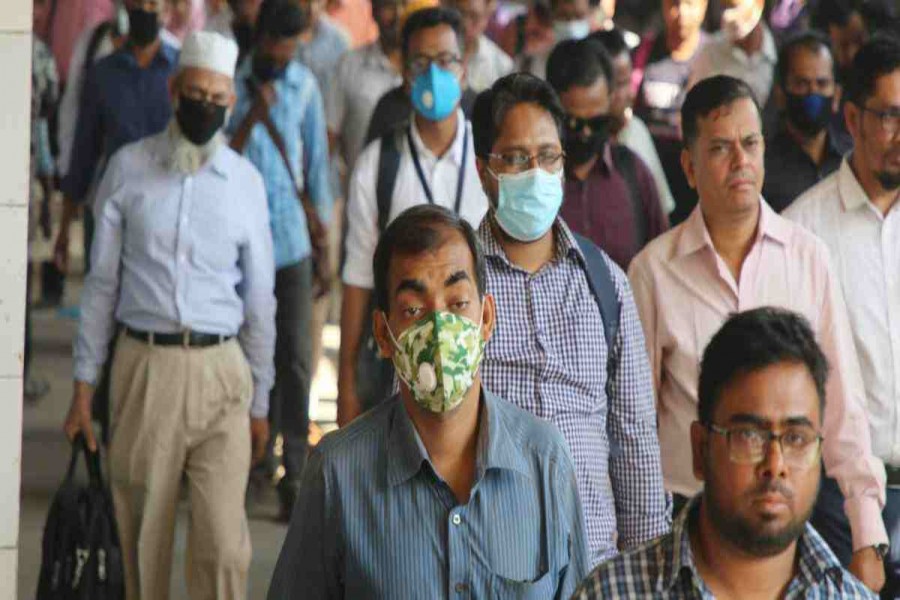The coronavirus has made the world more globalised albeit virtually, despite the segregation of humans caged and fenced off through land, air and sea blockades. Courtesy of the social media, conscious people almost everywhere are aware of its creepy, fast assailing character and there are many, too, who seem pretty well informed on how to go about it -- in terms of preparedness. The good thing is that there is a calming sense of harmony in the way medical practitioners are suggesting measures for precaution at individual and community levels. The expressions -- isolation, social distancing, quarantine, and lockdown are doing repeated rounds everywhere, and however apt they have proved in fighting the pandemic, one has reasons to also be aware that their application varies from place to place, and indeed country to country.
Lockdown is the most spoken antidote for snuffing the virus. Wings clipped, it is condemned to be immobile; and being unable to roam around through carriers means it stays in one place, dies solitary death. Arguing makes no sense as this has been proved over the past weeks more than the advocates of lockdown expected. But locking down Milan or Madrid or whole of California isn't the same as locking down a part of Dhaka city or an upazila anywhere in Bangladesh.
We have heard of excellent results of locking down a small city, north of Italy, inhabited by around four thousand people. A potentially dangerous zone since the corona outbreak, the city was locked down first and then tests were conducted on all living there. A week later, there was not a single case of new corona infection. Given that the city was inhabited by such a small number of people, cutting it off and forcing people to be under strict terms of quarantine was no big deal for Italy. Necessary provisions including food and medicine were made available to all. In Spain, lockdown is now in full swing, half of the country is shut strictly as per the do's and don'ts of quarantine protocol. In Canada, PM Justin Trudeau, himself in home quarantine, has reportedly issued instructions to send provisions to those in places locked down.
Locking down places in this country, even those with potential corona-suspects, needs careful thinking. Clearly, it's the livelihood concern of the people that figures foremost. Reports say the government on Thursday locked down vulnerable Shibchar upazila in Madaripur district as three more COVID-19 patients were identified on that day. This is the first time the government here locked down a particular area to prevent spread of corona virus. The virus is believed to have spread from the recent Italy returnees in the upazila. Shops and businesses, except medicine stores, groceries, kitchen markets and restaurants would remain closed until further orders. The lockdown includes public transports, engine-run rickshaw vans and other indigenous transports. It is, however, not known how the people there are pulling on with or without supplies from the government.
For around a week, there is apparently an increasing pressure on the government to lockdown more places. For many the reason being -- there is no credible information on the number of people affected or - more importantly - how many more are likely to show symptoms and how soon. So far, the victims were mostly people who travelled from Corona-struck places like Italy, China, Malaysia, Singapore and so on. Some cases were found to have caused from contact with the carriers.
Because of the dearth of testing kits, and worse still, by designating a lone agency as the focal point (IEDCR), the government has unwittingly or not restricted treatment procedures-for no justifiable reason. Globally, it is established, particularly in China, Hongkong, Taiwan, Singapore and lately Italy, that the more the tests are done, the less the spread of the virus. After all, once someone knows he or she is affected, it is easy to isolate the person from others' contact. It is no doubt intriguing that the authorities were brash enough to say they were prepared for COVIT 19 with barely two thousand testing kits. So, how many thousands remain beyond the testing regime?
However, with more kits reaching the country and Gonoshashthaya Kendra set to produce kits at a low cost, it is expected that many hospitals would soon be doing the tests and as our ill fate would have it, many more cases would be detected.
So, there may be the need for lockdown, far more pressingly to be felt than now. In all fairness, it is critical for the government to think on how to make lockdown work -- given what it demands and how best to come to terms with it, in keeping with the existing reality here.
Today's media reports have quoted organisations, ministries, city corporations, law enforcers -- all key stakeholders in the event of large-scale lockdown/s, but nobody has reported receiving instructions on setting out plans, nor has there been any inter-agency meeting to work out the modus operandi. Time is, however, running fast. The government has shown enough concern and some efforts are in place too, but it must sit up. Now.


